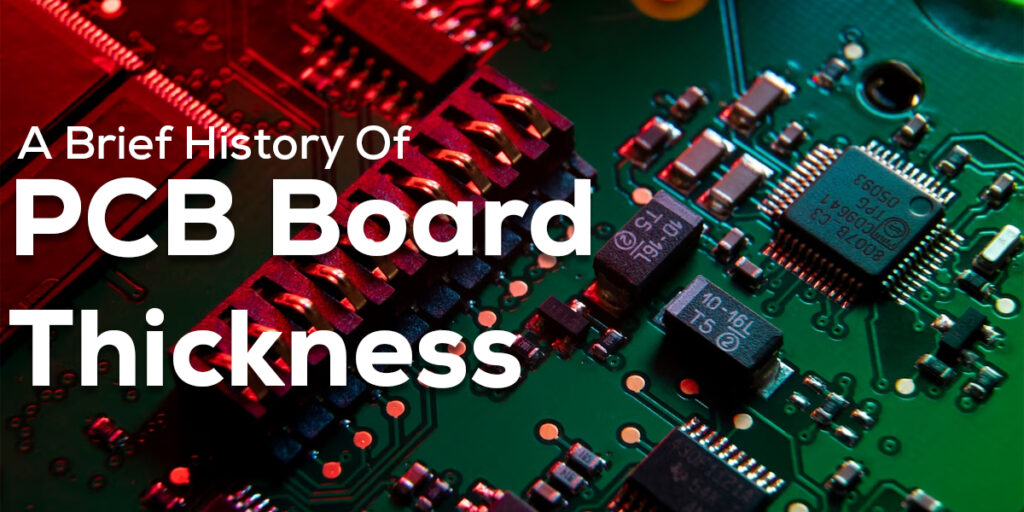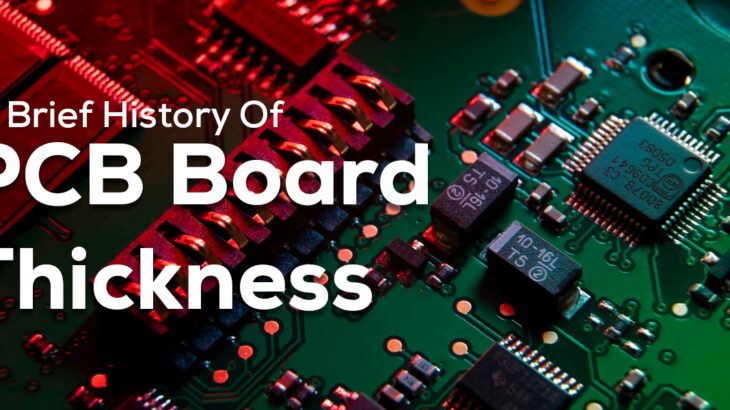
Printed Circuit Boards (PCBs) play a critical role in product engineering, especially in electronic products, where the connectivity and networking of the components happen inside the gadgets for seamless functionality. However, we often get surprised at the excellence of technological advancement of modern devices; it is also essential to know about the history or origin of PCBs and their evolution in terms of their thickness. In this blog, we’ll journey through time to understand the evolution of PCB board thickness.
Standard Board Thickness: Why Is It Essential?
The thickness of a PCB board gains significance when utilizing a standard board edge connector. Additionally, understanding the board thickness is vital when mounting within an enclosure or adhering to system requirements that specify this particular thickness.
Early Days:
The evolution of PCB dates back to the older days of its inception. In those days, the engineers or developers focused entirely on the functionality rather than its size. The first PCBs were relatively thick and rigid, often made of phenolic resin or bulkier materials. These early boards were far from the sleek and compact designs we see today.
Miniaturization Era:
As technology advanced, the demand for smaller and lighter electronic devices grew. It was when the era of miniaturization started, and developers shifted their focus slightly to size. As a result, it paved the path for the development of smaller electronic components that did not leave the PCBs as well. Consequently, it led to a decreased PCB board thickness which was duly possible because of the epoxy laminates and fiberglass invention. Thinner boards had efficient heat dissipation and paved the way for portable gadgets.
Surface Mount Technology (SMT) Revolution:
Introducing Surface Mount Technology (SMT) in the 1980s marked a significant turning point in PCB design. SMT components, smaller and lighter than their through-hole counterparts, allowed for even thinner and more compact PCBs. Manufacturers began using thinner materials and refining production techniques to accommodate the requirements of SMT, making electronic devices more streamlined and efficient.
Ultra-Thin PCBs:
In the late 20’s and the beginning of the 21st century was the invention of mobile phones and electronic wearables, which led to the demand for ultra-thin PCBs. Hence, electronic devices such as smartphones, smartwatches, and tables demanded lightweight, flexible circuits that could easily feed into these designs. It prompted the development of ultra-thin PCBs using flexible polyimide, allowing for bendable and foldable electronic devices.
Current Trends:
In recent years, the emphasis has shifted towards flexible PCBs. These boards, often called FPCBs or Flex PCBs, allow for three-dimensional designs and increased integration. The use of flexible substrates, such as polyimide or polyester, has become commonplace, enabling manufacturers to create innovative and compact electronic products. The pursuit of integration and space-saving solutions continues to drive advancements in PCB technology.
The history of PCB board thickness is a testament to the relentless pursuit of innovation in the electronics industry. The evolution has been remarkable, from the early days of bulky circuits to the current era of ultra-thin and flexible PCBs. As we look to the future, the demand for increasingly compact and integrated electronic devices will undoubtedly push the boundaries regarding PCB design and thickness. Hence, if you are looking for innovative and functional PCB boards for your products, approach Sunstream for the best PCB design services for optimized energy, power, and space products that meet the market applications.




 +1.585.935.7123
+1.585.935.7123 +91-804-148-6861
+91-804-148-6861